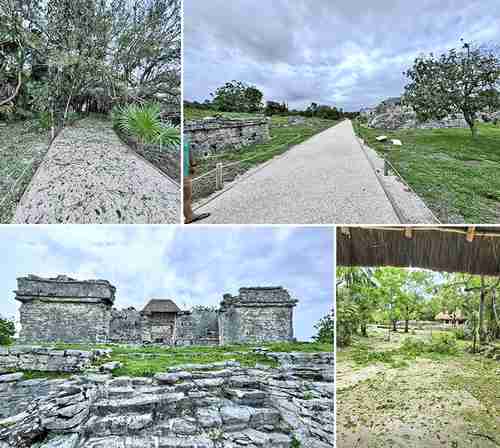After the hurricane passed Beryl In Quintana Roo, early yesterday morning, no damage was reported in the state’s archaeological sites, reported Diego Prieto Hernández, director of the National Institute of Anthropology and History (INAH).
In a preliminary report, the official told The Day that fallen trees and paths cut off by falling branches and rocks were found, but that no damage was observed in archaeological structures or damage to cultural heritage. However, he noted, exhaustive surveys of archaeological areas and sites are being carried out in order to document incidents.
For his part, Margarito Molina, director of the INAH Quintana Roo center, reiterated that in Tulum, an area visited by 2 million tourists a year, there are damages to trails, fallen branches and leaf litter, but nothing serious. The site He already took a bath, he’s a little disheveled
but cleaning will be done to reopen on Sunday, The monuments are there, standing, without any damage.
.
The anthropologist said that archaeologists had to wait a few hours to find out the state of the area, because the alert was still in place and the pass was closed by the National Guard.
The main monuments of Tulum were built 830 years ago, right there, facing the sea; the passage of time is already noticeable, but they have not collapsed.
he commented.
He added that natural aspects such as the reef, coastal dunes and mangroves are very helpful when hurricanes hit the coast of Quintana Roo, as they cushion the impact. Also, the quality of the construction of the Mayan architects, who, without using cement, but lime, with mortar of stone dust and saskab, raised these monuments. That is very interesting; sometimes, rather than knowing the architectural styles of the Mayan civilization, one should delve deeper into the construction capacity, such as the orientation to the wind or the rain. The houses of the current Mayan villages are not square, but elliptical, with the knowledge of offering less resistance to the wind and the use of natural elements that allow microclimates inside; it is all ancestral knowledge.
he explained.
The anthropologist considered that the recovery of visitors after the pandemic continues, in addition to the fact that, with the strength of the peso against the dollar, some tourists find it more difficult to travel, But that’s fine, for the country’s economy.
. However, with the operation of the Mayan Train and the Promeza budget, The 11 archaeological zones are becoming beautiful, where work is being done on research and infrastructure
.
In the case of Muyil, some 30 kilometers to the south, he said that it took longer for specialists to arrive due to road closures, in addition to the fact that communication was difficult due to failures in the electrical and telephone networks, but, as in the area of San Gervasio, in Cozumel, no damage was reported.
With information from Patricia Vázquez, correspondent
